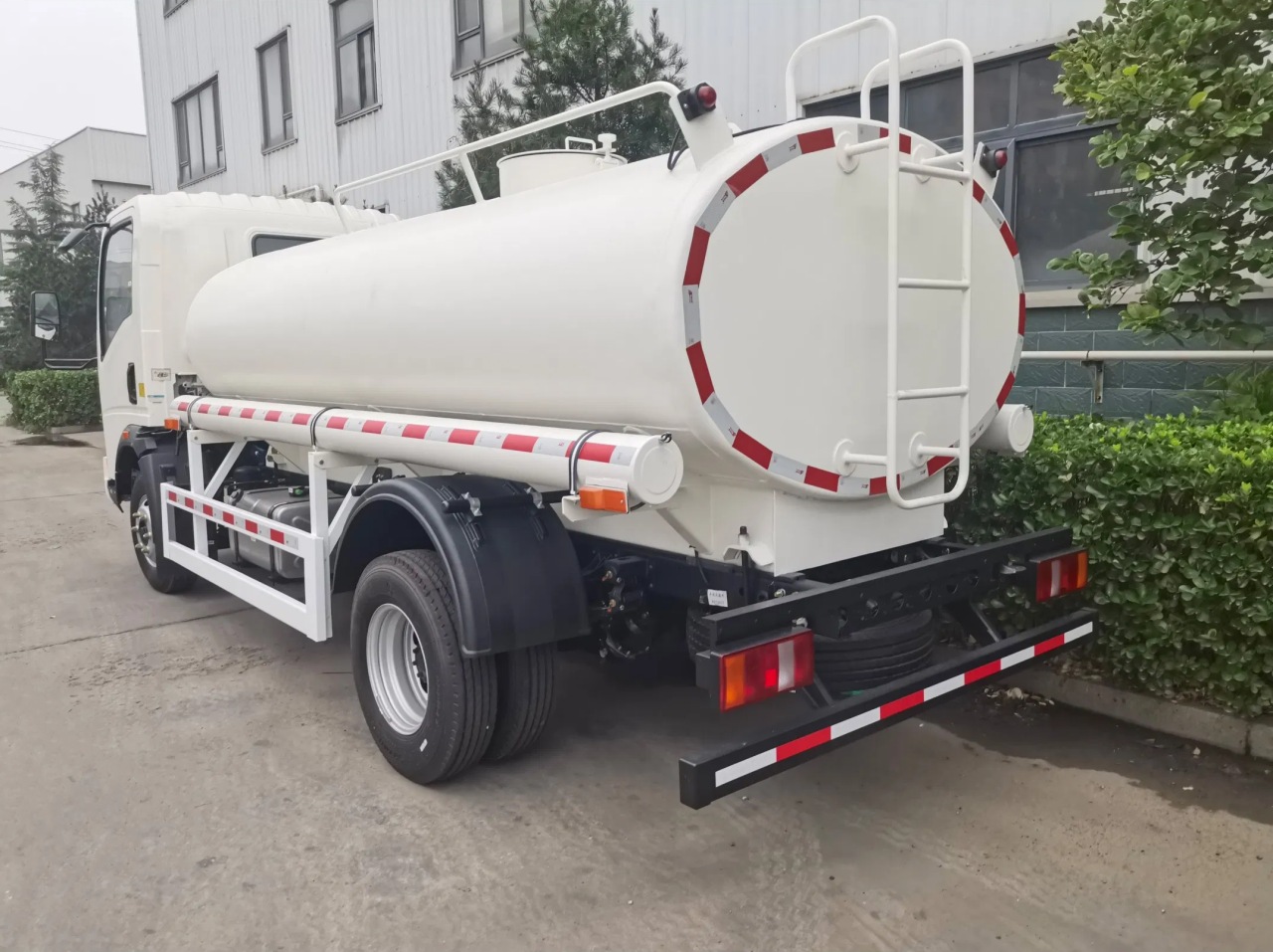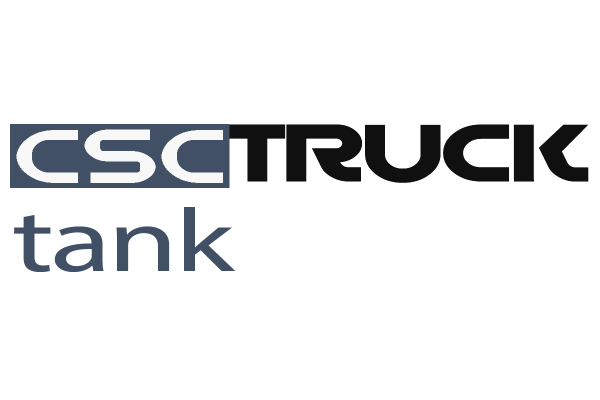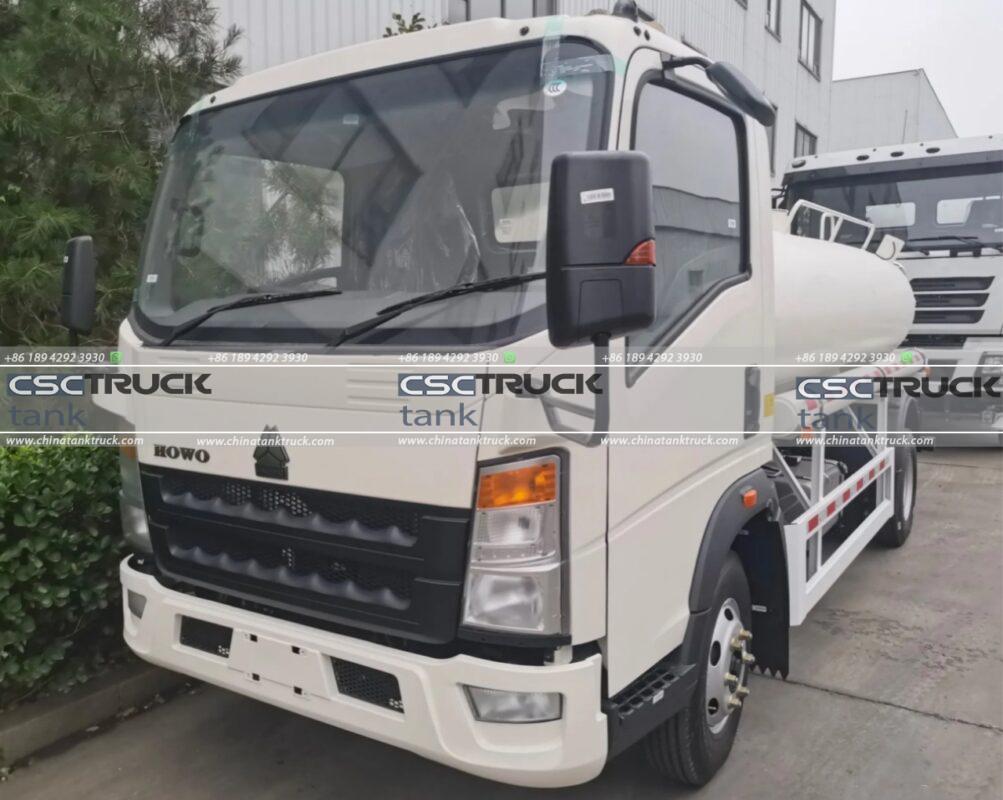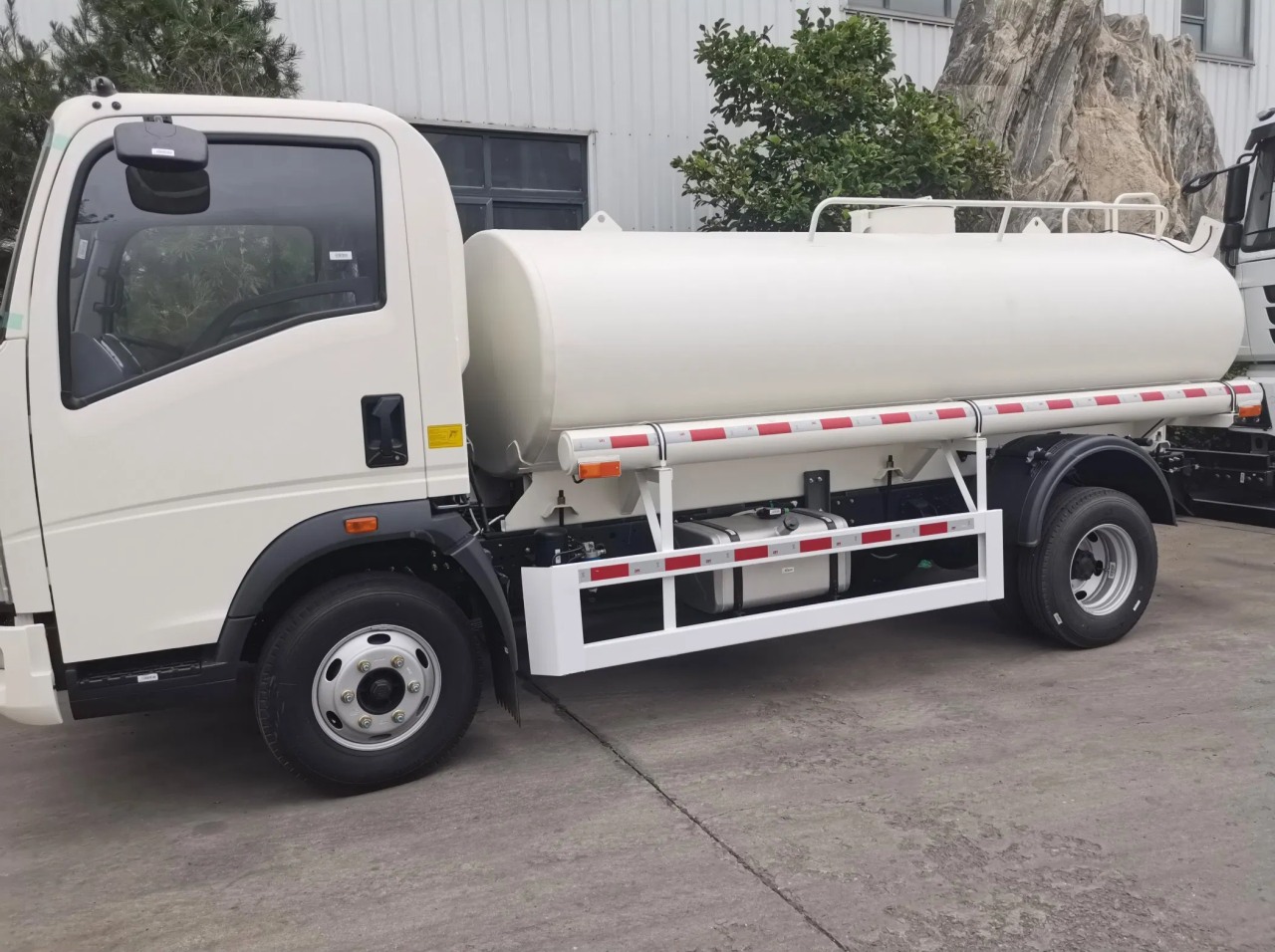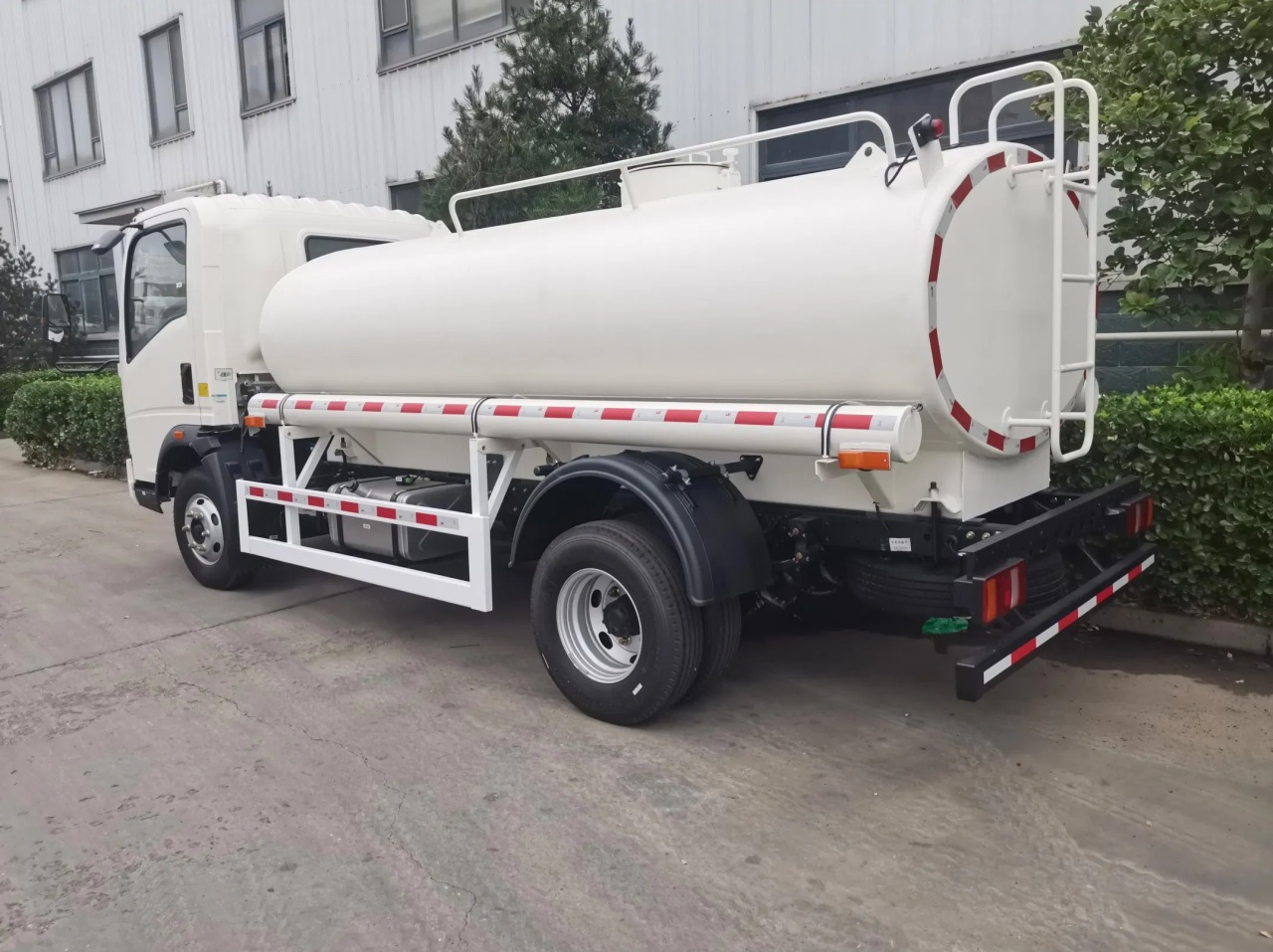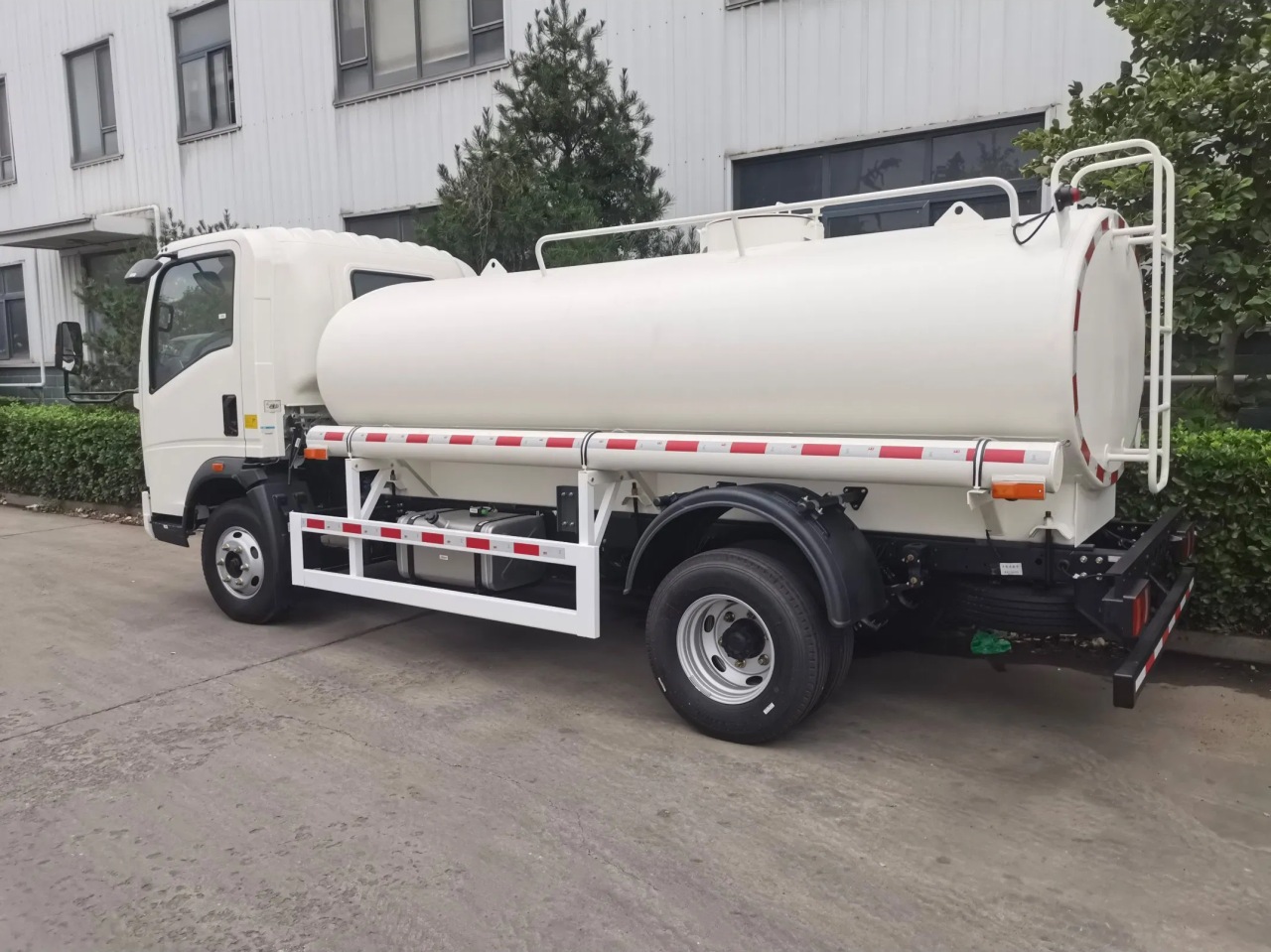Carbon steel tank trucks have long been a cornerstone in the transportation of a wide range of bulk liquids, including petroleum products, hot bitumen, and industrial waste. With their unmatched strength, cost-effectiveness, and durability, these trucks play a crucial role in energy supply chains, road construction, and environmental management. This article explores the advantages, engineering, and applications of carbon steel tank trucks, with a focus on their use in transporting petroleum, bitumen, and hazardous or non-hazardous waste.
1. Why Carbon Steel for Tank Trucks?
Carbon steel is a robust, wear-resistant alloy made primarily of iron and carbon. Unlike aluminum or stainless steel, carbon steel is known for its high tensile strength and resistance to mechanical damage, making it a prime choice for demanding transport conditions.
Key Advantages:
- Strength and Structural Integrity: Carbon steel tanks can withstand high internal pressures and external impacts during loading, transport, and unloading.
- Thermal Resistance: Especially beneficial for high-temperature loads like bitumen, carbon steel retains structural stability even under thermal stress.
- Cost-Effective: Compared to stainless steel, carbon steel is more affordable, especially for non-corrosive or temperature-stable cargo.
- Weldability: Carbon steel is easy to fabricate and repair, which is critical for maintaining tank integrity and extending service life.
2. Carbon Steel Tank Truck Design Features
Carbon steel tankers are designed with purpose-specific engineering to accommodate different liquid types:
- Shell Thickness: Depending on the cargo type and transport regulation, shell thickness may range from 4 mm to 10 mm or more.
- Compartments: Multi-compartment designs allow transportation of various grades of petroleum in a single trip.
- Insulation Layers: For heat-sensitive materials like bitumen, tanks are fitted with mineral wool or polyurethane foam insulation.
- Heating Coils or Burners: Bitumen tank trucks often include in-built heating systems (diesel burners or electric heating coils) to maintain product viscosity.
- Anti-Corrosive Coating: For tanks carrying waste or mildly corrosive substances, internal epoxy coatings or rubber linings are applied.
- Pressure Relief and Venting Systems: Designed to prevent vapor buildup and enhance safety during the transport of flammable or volatile liquids.
3. Applications by Sector
a. Petroleum Transport
Carbon steel tankers are widely used to transport diesel, gasoline, kerosene, and crude oil. These trucks are typically constructed under DOT 406 or ADR specifications to ensure compliance with international safety standards.
Key Requirements:
- Compliance with hazardous material transport standards.
- Vapor recovery systems to prevent atmospheric pollution.
- Explosion-proof fittings and grounding systems to minimize fire hazards.
Typical Capacity: 20,000 to 45,000 liters (5,000 to 12,000 gallons), depending on regional axle load limits.
b. Bitumen and Asphalt Emulsion Transport
Hot bitumen and asphalt emulsions require temperature-controlled environments. Carbon steel’s high melting point and strength make it ideal for transporting these materials at temperatures exceeding 160°C (320°F).
Design Adaptations:
- Fully insulated tanks to prevent heat loss.
- In-tank agitation systems are used to maintain material homogeneity.
- Flameproof heating systems are integrated into the tank structure.
Common Uses: Delivery to paving sites, remote asphalt plants, or during road maintenance operations.
c. Waste and Sludge Transport
Municipal and industrial waste—including sewage sludge, oily waste, and liquid by-products—is increasingly moved using heavy-duty carbon steel tankers.
Features Required:
- High vacuum suction systems for loading/unloading.
- Manholes for cleaning and inspection.
- Reinforced tank heads for heavy sludge materials.
- Leakproof seals and anti-spill barriers to ensure environmental safety.
Regulatory Consideration: Must comply with local environmental regulations such as the EPA (in the U.S.) or the Waste Framework Directive (EU).
4. Durability and Maintenance
The lifespan of a carbon steel tank truck can extend beyond 15 years when properly maintained. Key maintenance activities include:
- Regular Inspection: Checking for weld integrity, rust development, and structural deformities.
- Corrosion Control: Application of anti-rust primers, linings, or cathodic protection systems.
- Valve and Seal Replacement: Ensuring all fittings maintain proper seals under pressure.
- Heating System Service: Particularly for bitumen tanks, where malfunction can cause material solidification and costly downtime.
Thanks to their robust construction and repair-friendly nature, carbon steel tanks can often be refurbished or retrofitted rather than replaced, which lowers long-term ownership costs.
5. Safety and Compliance
Transporting hazardous or high-temperature materials requires stringent safety measures. Carbon steel tank trucks are designed to meet or exceed global safety standards such as:
- ADR (European Agreement concerning the International Carriage of Dangerous Goods by Road)
- DOT (U.S. Department of Transportation) Regulations
- ASME Pressure Vessel Codes for tanks with pressurization
Essential safety components include:
- Flame arrestors
- Anti-static grounding cables
- Pressure-relief valves
- Emergency shut-off systems
- Overfill protection sensors
Training for drivers and routine safety inspections are also mandatory for operators handling petroleum or waste in bulk.
6. Customization and Industry Trends
Manufacturers increasingly offer custom-built carbon steel tank trucks tailored to the exact needs of operators. New technologies are also influencing the industry:
- Telematics Integration: Real-time GPS tracking, temperature monitoring, and valve operation control.
- Hybrid Heating Systems: Use of electric + diesel burners for improved efficiency.
- Automated Unloading Systems: Reduce manual labor and enhance safety.
Additionally, there’s a growing push toward modular tank design to allow quick conversion between petroleum, bitumen, or waste service with minimal modifications.
Conclusion
Carbon steel tank trucks remain one of the most durable, adaptable, and cost-effective solutions for transporting petroleum, bitumen, and liquid waste. Their structural strength, heat resistance, and ability to be custom-engineered for diverse applications make them indispensable in today’s logistics chain.
From fueling remote energy sites to delivering hot asphalt for roadwork and safely moving waste from industrial zones, these versatile tankers continue to power industries worldwide, reliably and safely.
As technologies evolve and regulatory requirements grow more stringent, carbon steel tank trucks are being refined with better coatings, smarter systems, and improved insulation, ensuring they stay relevant for years to come.
